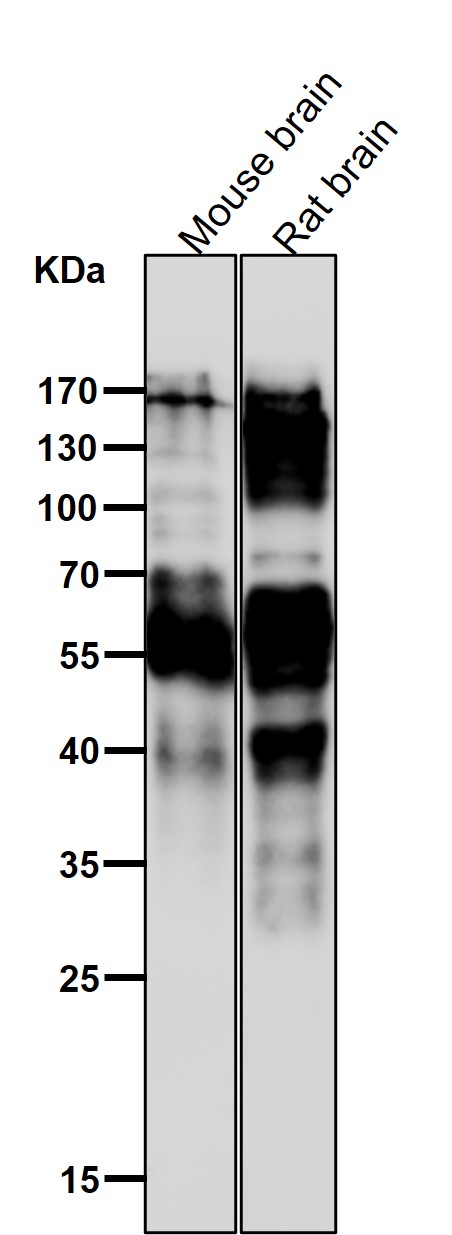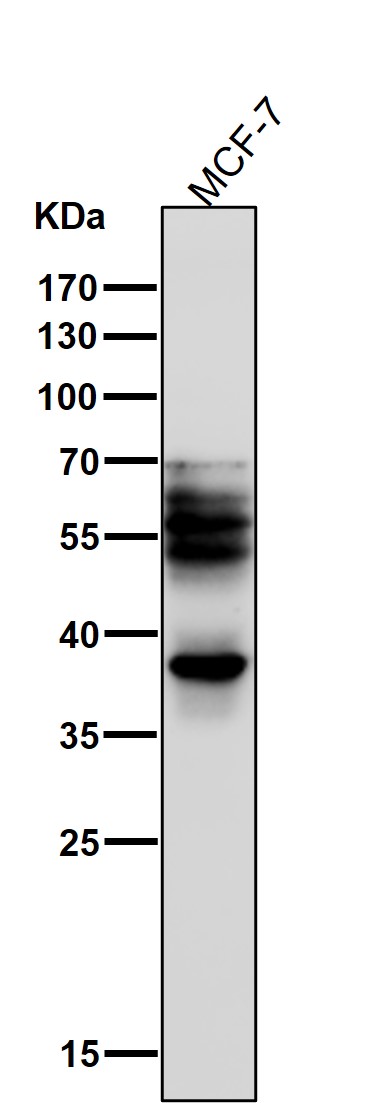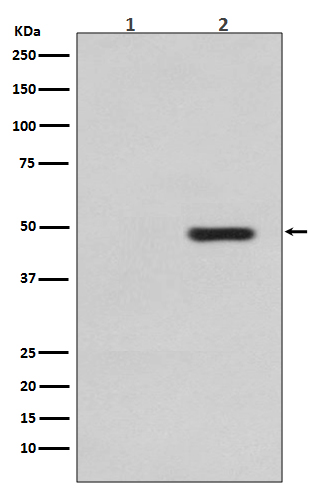


| WB | 1/1000-1/2000 | Human,Mouse,Rat |
| IF | 1/20-1/50 | Human,Mouse,Rat |
| IHC | 1/100-1/200 | Human,Mouse,Rat |
| ICC | 技术咨询 | Human,Mouse,Rat |
| FCM | 咨询技术 | Human,Mouse,Rat |
| Elisa | 咨询技术 | Human,Mouse,Rat |
| Aliases | MAPT; Microtubule-associated protein tau; MTBT1; Neurofibrillary tangle protein; Paired helical filament-tau; PHF-tau;;p-Tau (T231) |
| WB Predicted band size | Calculated MW: 79 kDa ; Observed MW: 46 kDa |
| Host/Isotype | Rabbit IgG |
| Antibody Type | Primary antibody |
| Storage | Store at 4°C short term. Aliquot and store at -20°C long term. Avoid freeze/thaw cycles. |
| Species Reactivity | Human,Mouse,Rat |
| Immunogen | A synthesized peptide derived from human Tau around the phosphorylation site of T231 |
| Formulation | Purified antibody in PBS with 0.05% sodium azide,0.05% BSA and 50% glycerol. |
+ +
以下是3篇与Phospho-Tau(T231)抗体相关的文献概览:
1. **文献名称**: "Cerebrospinal fluid phosphorylated tau protein as a biomarker for Alzheimer's disease"
**作者**: Hampel, H. 等
**摘要**: 该研究验证了Phospho-Tau(T231)抗体在阿尔茨海默病(AD)患者脑脊液中的检测价值,发现T231磷酸化水平与AD早期病理进展显著相关,可作为AD诊断的生物标志物。
2. **文献名称**: "Specific tau phosphorylation sites correlate with severity of neurofibrillary pathology in Alzheimer's disease"
**作者**: Augustinack, J.C. 等
**摘要**: 通过免疫组化分析,研究证实T231位点的磷酸化程度与AD患者脑组织中神经纤维缠结(NFTs)的严重程度呈正相关,提示该抗体在病理分期中的应用潜力。
3. **文献名称**: "Tau phosphorylation at Thr231 is critical for Aβ-induced cognitive deficits"
**作者**: Brier, M.R. 等
**摘要**: 在转基因小鼠模型中,研究发现T231磷酸化通过促进tau蛋白的异常聚集导致突触功能障碍,使用该抗体阻断磷酸化可改善Aβ诱导的认知损伤。
4. **文献名称**: "Role of tau protein in neuronal plasticity and phosphorylation dynamics"
**作者**: Avila, J. 等
**摘要**: 探讨Tau蛋白T231位点磷酸化对微管稳定性的调控作用,发现其磷酸化状态异常与神经元可塑性下降及神经退行性变密切相关。
这些文献涵盖了该抗体在疾病诊断、病理机制及治疗研究中的应用。
Phospho-Tau(T231) antibody is a specialized tool used to detect tau protein phosphorylated at threonine 231 (T231), a key post-translational modification implicated in neurodegenerative diseases. Tau, a microtubule-associated protein, stabilizes neuronal microtubules in normal physiology. However, hyperphosphorylation of tau disrupts this function, leading to its aggregation into neurofibrillary tangles (NFTs), a hallmark of Alzheimer’s disease (AD) and other tauopathies. Phosphorylation at T231 is an early event in tau pathology, associated with conformational changes that promote detachment from microtubules and subsequent misfolding. This site is also linked to tau’s interaction with Pin1. a prolyl isomerase that may regulate tau’s functional state or degradation.
The Phospho-Tau(T231) antibody is widely used in research to study disease mechanisms, monitor tau pathology progression, and evaluate therapeutic interventions in models of AD, chronic traumatic encephalopathy (CTE), and related disorders. It is employed in techniques like Western blotting, immunohistochemistry, and ELISA to quantify phosphorylated tau levels in brain tissues, cerebrospinal fluid (CSF), or blood-based biomarkers. Elevated T231-phosphorylated tau in CSF correlates with early AD stages, making it a potential diagnostic marker. Commercial versions of this antibody are typically validated for specificity using knockout controls or phosphatase-treated samples. Its role in distinguishing pathological tau from normal tau underscores its importance in both basic research and clinical applications targeting tau-driven neurodegeneration.
×